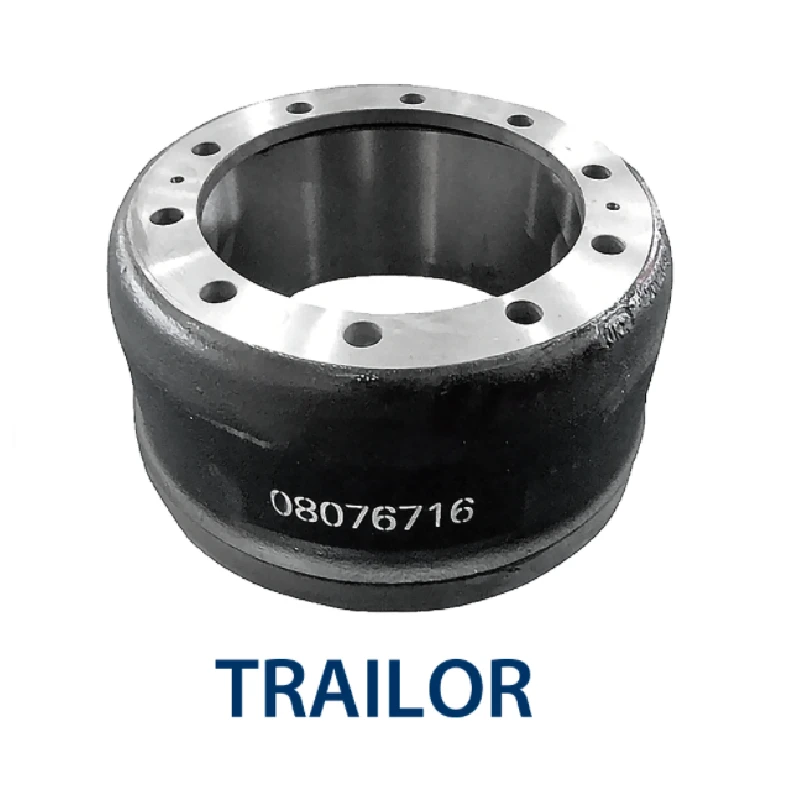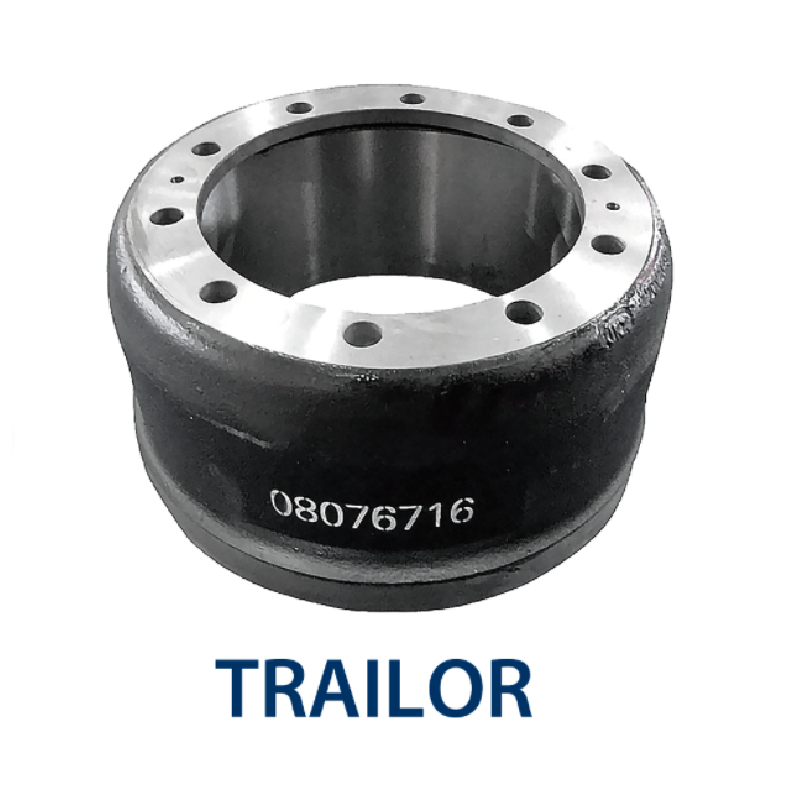2 月 . 15, 2025 16:33 Back to list
removing stuck brake drum
Dealing with a stubborn brake drum that refuses to budge can be a daunting task, often testing the patience and skills of even seasoned mechanics. Yet, understanding the intricate details surrounding this mechanical challenge can make the task more approachable and ensure safety and efficiency.
Another effective method involves loosening the self-adjuster. Most brake assemblies have a small rubber plug covering access to the adjuster through the backing plate. Removing this plug and turning the adjuster star wheel in the direction that contracts the brake shoes can sometimes relieve enough pressure to allow the drum to be removed. Mastery of this technique resides in understanding whether your specific vehicle's adjuster requires clockwise or counterclockwise turns. In cases where mechanical removal methods fall short, employing a puller tool designed specifically for brake drums might be required. This tool applies even outward pressure to the drum, facilitating removal without causing harm. Always follow the manufacturer’s instructions when using a puller, as misapplication can lead to mechanical failure or personal injury. Once removed, inspect the condition of the drum. Check for glazing, grooves, or any signs of warping. Light rust can be addressed with fine-grit sandpaper, ensuring a smooth surface ready for reassembly or replacement. It's prudent to check the condition of the brake shoes and the other internal components; this is an opportunity to replace worn parts and prevent future issues. After resolving the immediate issue, prevention is key. Regular maintenance and checks can halt the accumulation of rust. Applying anti-seize lubricant to the hub assembly during wheel installation can prevent future problems. Keeping an eye on the brake system for any abnormalities, noises, or performance changes ensures that issues are caught early, maintaining vehicle safety and reliability. In conclusion, the challenge of removing a stuck brake drum, while initially intimidating, can be approached methodically using a combination of knowledge, patience, and the right tools. By prioritizing safety, leveraging mechanical insight, and conducting thorough follow-ups, one can effectively manage and overcome this common automotive hurdle, ensuring that the brake system remains in optimal condition for safe driving conditions.


Another effective method involves loosening the self-adjuster. Most brake assemblies have a small rubber plug covering access to the adjuster through the backing plate. Removing this plug and turning the adjuster star wheel in the direction that contracts the brake shoes can sometimes relieve enough pressure to allow the drum to be removed. Mastery of this technique resides in understanding whether your specific vehicle's adjuster requires clockwise or counterclockwise turns. In cases where mechanical removal methods fall short, employing a puller tool designed specifically for brake drums might be required. This tool applies even outward pressure to the drum, facilitating removal without causing harm. Always follow the manufacturer’s instructions when using a puller, as misapplication can lead to mechanical failure or personal injury. Once removed, inspect the condition of the drum. Check for glazing, grooves, or any signs of warping. Light rust can be addressed with fine-grit sandpaper, ensuring a smooth surface ready for reassembly or replacement. It's prudent to check the condition of the brake shoes and the other internal components; this is an opportunity to replace worn parts and prevent future issues. After resolving the immediate issue, prevention is key. Regular maintenance and checks can halt the accumulation of rust. Applying anti-seize lubricant to the hub assembly during wheel installation can prevent future problems. Keeping an eye on the brake system for any abnormalities, noises, or performance changes ensures that issues are caught early, maintaining vehicle safety and reliability. In conclusion, the challenge of removing a stuck brake drum, while initially intimidating, can be approached methodically using a combination of knowledge, patience, and the right tools. By prioritizing safety, leveraging mechanical insight, and conducting thorough follow-ups, one can effectively manage and overcome this common automotive hurdle, ensuring that the brake system remains in optimal condition for safe driving conditions.
Latest news
-
Brake Drum for Kamaz Trucks Durable OEM Replacement & High Performance
NewsMay.30,2025
-
Brake Drum Man High-Quality Drum Brake & Shoe Solutions
NewsMay.30,2025
-
High-Performance Brake Drum for Kamaz Trucks Durable Drum Brake Components
NewsMay.29,2025
-
Brake Drum Man High-Quality Drum Brake Drums & Brake Shoes
NewsMay.29,2025
-
Brake Drum MAZ High-Performance & Durable Replacement Parts
NewsMay.29,2025
-
heavy truck brake drums
NewsMar.07,2025
